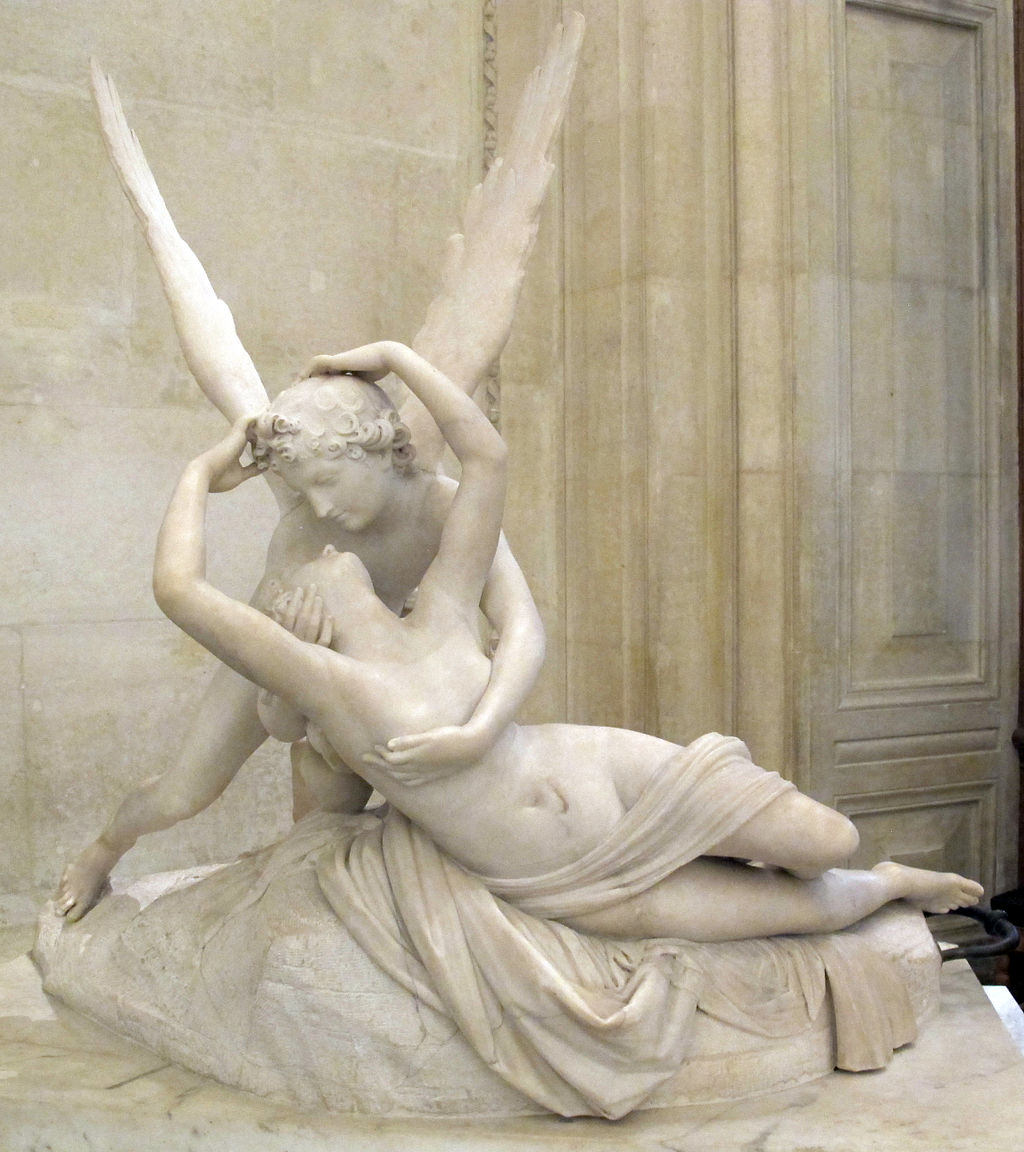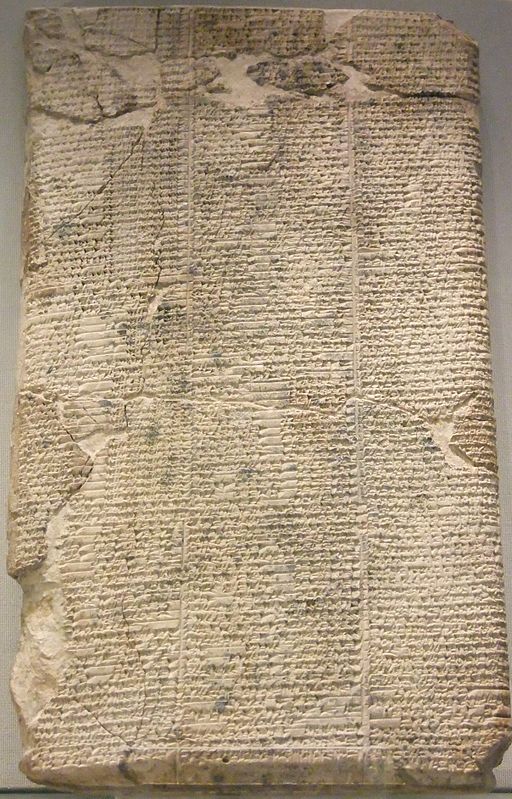The “Lamentation over the city of Ur” dates back at least 4000 years to ancient Sumer, the world’s first urban civilization.
The Cuneiform clay tablet is a Sumerian lament composed around the time of the fall of Ur to the Elamites and the end of the city’s third dynasty in about 2000 BC.
The lament is composed of over four hundred lines and describes how the goddess, weeps for her city after pleading with the leader of the Mesopotamian gods to call back the destructive storm.
Interspersed with the goddess’s wailing are other sections, which describe the ghost town that Ur has become. The account recounts the wrath of god’s storm, and invoke the protection of the gods against future calamities.
The goddess’s name is Ningal, the wife of the moon god Nanna, who petitions the leaders of the gods, to change their minds and not to destroy Ur. She explains to the other gods :
“Truly I shed my tears before An, and truly I made supplication,
I myself before Enlil: “May my city not be ravaged, I said to them, May Ur not be ravaged.”
Ur’s temple treasury was raided by invading Elamites, and the center of power in Sumer was moved to Isin. Thee control of trade in Ur passed to several leading families of the city.
The destruction by the Elamites is compared to the imagery in the myth of a rising flood and raging storm:
“Alas, storm after storm swept the Land together: the great storm of heaven, the ever-roaring storm,
the malicious storm which swept over the Land, the storm which destroyed cities, the storm which destroyed houses,
… the storm which cut off all that is good from the Land.”
Laments
A lament or lamentation is a passionate expression of grief, often in music, poetry, or song form. The pain is most often born of regret or mourning.
Laments constitute some of the oldest forms of writing, and examples can be found across all human cultures.
The Lament for Ur contains one of five known Mesopotamian “city laments” for ruined cities in the voice of the city’s goddess. Other ancient Mesopotamian city laments are for the cities of Nippur, Eridu, Uruk.
Elements of laments appear in the Hindu Vedas, and the Jewish Tanakh, which would later become the Christian Old Testament.
The Book of Lamentations of the Old Testament, which bewails the destruction of Jerusalem by Nebuchadnezzar II of Babylon in the sixth century B.C., is similar in style and theme to these earlier Mesopotamian laments.
Similar laments can be found in the Book of Jeremiah, the Book of Ezekiel, and the Book of Psalms, Psalm 137 (Psalms 137:1-9).
Laments are present in both the Iliad and the Odyssey and continued to be sung in classical and Hellenistic Greece.
Famous Laments
Many of the oldest and most lasting poems and texts in human history have been or include laments:
- The Lament for Sumer and Ur and other Ancient Near Eastern religious texts.
- The Iliad, the Odyssey, and other classical and Hellenistic Greek texts.
- The Jewish Tanakh, which would later become the Christian Old Testament.
- The Book of Job, The Book of Lamentations, and other books in the Old Testament.
- Hindu Vedas
- The Lamentation of Christ in its many manifestations.
- Beowulf
- The Lament of Edward II
- Shelley’s “Adonais”
Ur
Ur was an important Sumerian city-state in ancient Mesopotamia, which was once a coastal city near the mouth of the Euphrates on the Persian Gulf.
The city dates from about 3800 BC and is recorded in written history as a city-state from the 26th century BC.
Today the ancient coastline has shifted, and the remains of the city are now well inland, on the south bank of the Euphrates, in modern-day Iraq.
The site is marked by the partially restored ruins of the Ziggurat of Ur. It contained the shrine of Nanna, which was excavated in the 1930s.
Ur is likely the city of Ur Kasdim mentioned in the Book of Genesis as the birthplace of the Jewish, Christian, and Muslim patriarch Abraham (Ibrahim in Arabic).
Ur is mentioned four times in the Torah or Old Testament. There are; however, conflicting opinions identifying Ur Kasdim with other ancient sites.
Ur was the largest city in the world from c. 2030 to 1980 BC. Its population was approximately 65,000. Ur fell around 1940 BC to the Elamites.
Lament for Ur
- Title: Lament for Ur or Lamentation over the city
- Date: 1800 BC
- Culture: Sumerian
- Writing: Cuneiform
- Language: Sumerian
- Materials: Clay
- Type: Ancient Texts
- Museum: Louvre Museum
Virtual Tour of Ancient Texts
- Gilgamesh Flood Tablet – 7th century BCE
- Lament for Ur – 1800 BC
- Law Code of Hammurabi – 1754 BC
- Book of the Dead – Papyrus of Ani and Hunefe – 1250 BCE
- Cyrus Cylinder – 539–538 BC
- The Rosetta Stone – 196 BC
- Vindolanda Tablets – 1st-century
- Codex Vaticanus – 300–325
- Blue Qur’an – 9th – 10th century
- Miroslav Gospel – 1186
- Hadith Bayad wa Riyad – 13th-century
- The Belles Heures of Jean of France, Duke of Berry – 1405
Virtual Tour of Historically Influential Books
- Code Noir – 1687
- “Common Sense” by Thomas Paine – 1766
- “Poems on Various Subjects, Religious and Moral” by Phillis Wheatley – 1766
- Gardner’s Photographic Sketchbook of the Civil War – 1863
- Ancient Texts and Historically Influential Books
Ur: The Rise and Fall of the Ancient Sumerian City State
The Fall of Ur to the Elamites
Boney M – Rivers of Babylon – 1978
Lamentations
“Lamentations of Jeremiah”
Jewish prayer of fallen
Giuseppe Verdi – Nabucco – Hebrew Slaves ChorusGaelic Lament
Responses to Suffering and Evil: Lamentations and Wisdom Literature
Virtual Tour of Ancient and Historical Maps
- Jacques-Nicolas Bellin Map of the Straits of Malacca
- Abraham Ortelius Map of Southeast Asia
- Meto Navigation Chart
- Stick Chart for Sea Navigation
- Ptolemy’s View of the Solar System
- Piri Reis Map
- Babylonian Map of the World – Imago Mundi
- Ancient and Historical Maps
- Theatrum Orbis Terrarum
- Borgia Map
- Famous Ancient and Historical Maps
Virtual Tour of Prehistoric Art and Artifacts
- Ain Sakhri Lovers
- Wolverine Pendant of Les Eyzies – Prehistoric Portable Art
- Antler Perforated Baton – Paleolithic Portable Art
- Venus of Brassempouy
- Head of a Cycladic Statue, Keros-Syros Culture
- Stargazer – Sculpture of a Female Figure
- Stargazer Figurine
- Dancing Girl (Mohenjo-Daro) from the Indus Valley Civilization
- Prehistoric Stone Hand Axe
- Great Handaxe from Furze Platt
- Clovis Weapons and Tools
- Prehistoric Petrosphere – Carved Stone Spheres and Balls
- Neolithic Chinese Painted Pottery
- Korean Neolithic Pot
- Neolithic Pottery from Ban Chiang
- Li – Chinese Tripod Jar
- Comb-Pattern Pottery
- Phaistos Disc
- Sican Funerary Mask – Peru
- Greenstone Mask, Central America
- Australian Aboriginal Rock Art – Bradshaw Rock Paintings
- Indigenous Australian Rock Art – Wandjina Style
- Australian Aboriginal Bark Paintings
- Plastered Human Skulls from the Pre-Pottery Neolithic Age
- Neanderthal Flute – Divje Babe Flute
- Prehistoric Deer Skull Headdresses
- Bronze Age Gold Lunula
- Bronze Age Shield Yetholm-type -1200 – 800 BC
- Prehistoric Art and Artifacts
~~~
“Peace, peace! he is not dead, he doth not sleep
He hath awakened from the dream of life.”
– Adonais: An Elegy on the Death of John Keats by Percy Bysshe Shelley
~~~
Photo Credit: 1) Louvre Museum / CC BY-SA (creativecommons.org/licenses/by-sa/4.0)
Popular this Week








 Sponsor your Favorite Page
Sponsor your Favorite Page SEARCH Search for: Search Follow UsJoin – The JOM Membership Program
Sponsor a Masterpiece with YOUR NAME CHOICE for $5
Share this:
- Tweet

